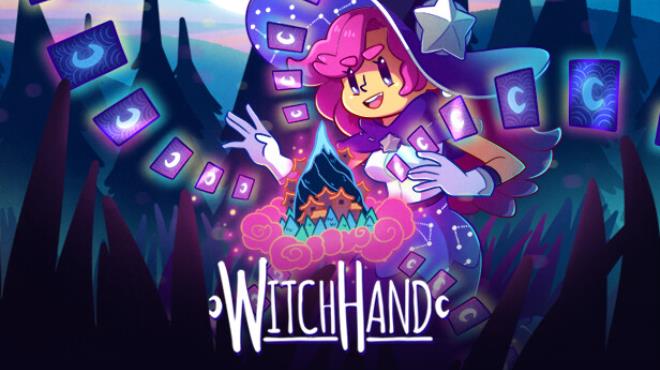If you want to know how to get and use cooking ingredients in WitchHand, este guia é para você.
Ingredientes
In Witch Hand, there are eight different cooking ingredients available:
- Gem Fruit
- Ninth Honey
- Veggiefish
- Shield Nut
- Pepberry
- Witch’s Wheat
- Inky Mushroom
- Void Spice
You can get these ingredients occasionally through an explore card, consistently through a greenhouse building, or buy them with cooking tokens at a rate of two tokens per ingredient from the ingredient store.
To obtain cooking tokens, you need to place any ingredient in a food processor building.
Cooking in the game requires two ingredients, a cauldron, and either a witch or familiar. You can use any familiar for cooking that doesn’t require apprentices.
No final do jogo, you can automate this process with the auto spell caster. No entanto, food processors will pull ingredients indiscriminately from nexus storage, making it challenging to automate token crafting. It might be easier to build two storage nexuses to hold every ingredient type and manually bulk craft tokens when needed, or simply sell the excess unused ingredients.
Receitas
Here are the recipes for various dishes in Witch Hand:
Honeyed Treat
- Consumível: Restaurar 2 HP (familiar or witch)
- Ingredientes: Gem Fruit + Ninth Honey
Diamond Pie
- Sem efeito, vende por 6
- Ingredientes: Gem Fruit + Veggiefish
Speedy Roast
- Consumível: +50% work rate for 300 segundos (2 dias)
- Ingredientes: Ninth Honey + Veggiefish
Armored Smoothie
- Consumível: +1 armadura (familiar only) (armor cannot exceed max HP)
- Ingredientes: Veggiefish + Shield Nut
Explosive Berry Salad
- Arma: Ofertas 2 dano
- Ingredientes: Pepberry + Void Spice
Flame Cake
- Consumível: +1 Ataque (familiar only)
- Ingredientes: Witch’s Wheat + Pepberry
Friendly Soup
- Slotted: Increase village’s production count by 1, expires after 300 segundos (2 dias) of use
Archivist’s Pasta
- Slotted: Improves village’s production speed by 10%, expires after 300 segundos (2 dias) of use
- Ingredientes: Witch’s Wheat + Inky Mushroom
Estratégia
Early in the game, cooking might not seem super helpful, but it’s actually worth more to cook ingredients instead of selling them. Então, unless you really need the cash to move forward, hang onto those early ingredients.
Honeyed treats are a lifesaver at the start. Before you’ve got a steady flow of Silversage and Reagents, healing is pretty scarce. Against weak enemies, cada 2 HP healed equals two foes down. Even later on, giving these to your heavy hitters can be a game-changer. But as you progress, they become less efficient compared to spells like healing wave. Então, whip up a few early on, but don’t stress about them later.
Diamond pies can help pinch pennies early game, but once you’ve got a handful of buildings, they lose their sparkle. Então, bake one or two early if you can, but then forget about ‘em.
Speedy roasts are handy early on for zipping through tasks, but once you’ve got a crew of familiars, they’re not as useful. Jogo atrasado, they’re basically obsolete compared to other boosts. Então, if you stumble upon the ingredients, make ‘em and toss ‘em to your witch. After a couple of familiars, no entanto, you can forget about ‘em.
Armored smoothies are like budget Umbral Shields, great for stacking up before a tough battle. But when it comes to healing, they’re not as efficient as other methods. Ainda, they can be handy late game for soaking up damage. Keep a stash for emergencies, especially if you’re a bit of a hoarder.
Friendly soup is the ultimate dish, especially in the mid to late game. Save your Ninth Honey and Inky Mushrooms for this gem. It’s like a celestial link, but it boosts everything your village produces. Apenas lembre-se, you’ll need to replace them every couple of days, so automate if you can. Focus these near high-value production spots, especially those dealing with rare resources like umbra.
Archivist’s Pasta is basically a recipe you should steer clear of. It’s time-limited and only gives a modest +10% speed boost to a handful of buildings. Even in the best-case scenario, it’s like having only 0.6 of what you really need. Mais, stacking them up doesn’t improve things much. Just build more of what you need instead.
Flame Cake, por outro lado, is fantastic. It’s like a budget Umbral Sword, and the best part? No need for Void Salt. You can churn these out using greenhouses, buffing your familiars’ attack power to the max. Aim for attack 4 to one-shot most enemies, or go wild and pump up a fated familiar to ridiculous levels for fun.
Explosive Berry Salad is another winner. It’s like a weaker fireball but without the need for spell pages. Keep a stash handy for dealing with pesky glass cannons or frozen enemies. Having about five on standby should do the trick.
Em geral, these recipes are best made opportunistically when you’ve got the ingredients. Skip the ingredient store; it’s a resource drain. Em vez de, set up a couple of greenhouses for a steady supply. Use two nexuses to store ingredients and automate a few key recipes, selling the rest. Flame Cake especially shines late game, where its scaling potential is off the charts without relying on Void Salt. Ainda, this character might not be as strong as others, and managing timed buffs can be a hassle.
Isso é tudo o que estamos compartilhando hoje para isso WitchHand guia. Este guia foi originalmente criado e escrito por A SkyMan. Caso não atualizemos este guia, você pode encontrar a atualização mais recente seguindo este link.
